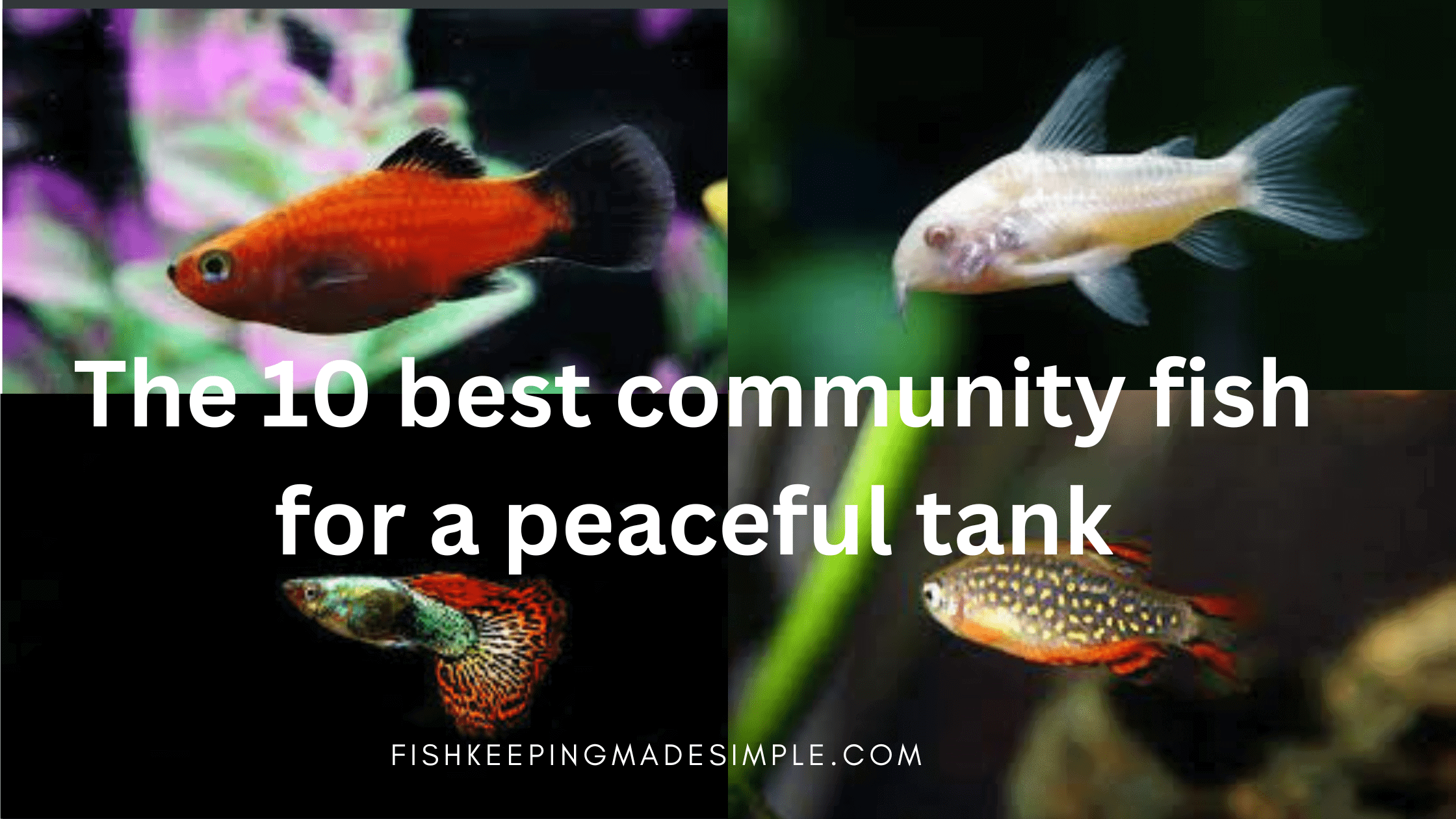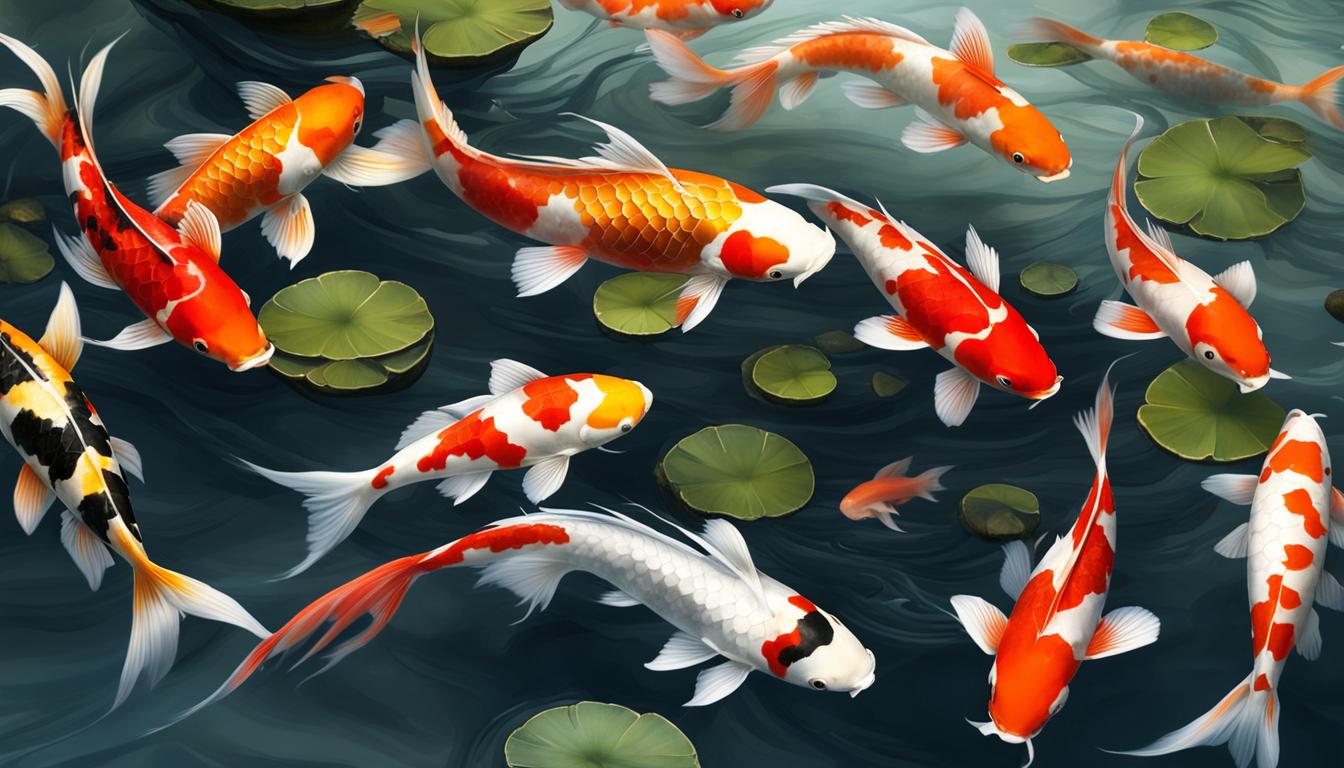Table of Contents
Introduction
Community fish are a type of freshwater fish that are known for their peaceful and social behavior. They are a popular choice for beginners and experienced aquarists alike because they can coexist peacefully with other fish in the same tank. Having a tank filled with community fish can create a peaceful and harmonious environment, which is beneficial for the overall health and well-being of the fish.
In addition to being peaceful, community fish are also generally easy to care for and can thrive in a variety of tank setups. They are a great choice for those who want to create a beautiful and low-maintenance aquatic environment.
Not only do community fish add beauty and interest to a tank, but they can also have a calming effect on their owners. Watching fish swim and interact with each other can be a relaxing and therapeutic experience. A peaceful tank can also be a great conversation starter and can even serve as a form of home decor.
Overall, community fish are a wonderful addition to any tank and can bring joy and relaxation to their owners. In the following sections, we will discuss the 10 best community fish for a peaceful tank.
The 10 best community fish:
Fish #1: Neon Tetra

The neon tetra (Paracheirodon innesi) is a small and colorful fish that is native to the Amazon Basin in South America. It is a popular choice for community tanks because of its peaceful and social behavior. Neon tetras grow to be about 2.5 cm (1 inch) in length and are known for their bright blue and red coloration.
In terms of care, neon tetras are relatively easy to keep. They prefer a well-planted tank with a pH between 6.0 and 7.5 and a temperature between 22 and 26°C (72 and 79°F). They are omnivores and will readily accept a variety of foods, including flakes, pellets, and live or frozen treats.
One important thing to note about neon tetras is that they are sensitive to changes in water quality and temperature. It is important to keep the tank clean and to perform regular water changes to ensure the health and well-being of these fish. Neon tetras are also prone to certain diseases, such as neon tetra disease and ich, so it is important to keep a close eye on their health and seek veterinary treatment if necessary.
Fish #2: Guppy

The guppy (Poecilia reticulata) is a small, colorful fish that is native to South America and the Caribbean. It is a popular choice for community tanks because of its peaceful and social behavior. Guppies grow to be about 5 cm (2 inches) in length and are known for their bright coloration, which can range from orange and yellow to blue and purple.
In terms of care, guppies are relatively easy to keep. They prefer a well-planted tank with a pH between 7.0 and 8.5 and a temperature between 22 and 28°C (72 and 82°F). They are omnivores and will readily accept a variety of foods, including flakes, pellets, and live or frozen treats.
One important thing to note about guppies is that they are livebearers, which means that they give birth to live young rather than laying eggs. This can be both a blessing and a curse, as it means that a single pair of guppies can quickly turn into a large group if not properly managed. It is important to keep an eye on the population of guppies in the tank and to remove excess individuals as needed.
Fish #3: Platy

The platy (Xiphophorus) is a small, colorful fish that is native to Central America. It is a popular choice for community tanks because of its peaceful and social behavior. Platies grow to be about 5 cm (2 inches) in length and are known for their bright coloration, which can range from red and yellow to blue and purple.
In terms of care, platies are relatively easy to keep. They prefer a well-planted tank with a pH between 7.0 and 8.5 and a temperature between 22 and 28°C (72 and 82°F). They are omnivores and will readily accept a variety of foods, including flakes, pellets, and live or frozen treats.
Like guppies, platies are livebearers, which means that they give birth to live young rather than laying eggs. This can be both a blessing and a curse, as it means that a single pair of platies can quickly turn into a large group if not properly managed. It is important to keep an eye on the population of platies in the tank and to remove excess individuals as needed.
Fish #4: Molly

The molly (Poecilia sphenops) is a small, colorful fish that is native to Central and South America. It is a popular choice for community tanks because of its peaceful and social behavior. Mollies grow to be about 10 cm (4 inches) in length and are known for their bright coloration, which can range from black and gold to red and green.
In terms of care, mollies are relatively easy to keep. They prefer a well-planted tank with a pH between 7.0 and 8.5 and a temperature between 22 and 28°C (72 and 82°F). They are omnivores and will readily accept a variety of foods, including flakes, pellets, and live or frozen treats.
Like guppies and platies, mollies are livebearers, which means that they give birth to live young rather than laying eggs. This can be both a blessing and a curse, as it means that a single pair of mollies can quickly turn into a large group if not properly managed. It is important to keep an eye on the population of mollies in the tank and to remove excess individuals as needed.
One unique aspect of mollies is that they have a high oxygen demand and prefer a well-oxygenated tank. They also have a high tolerance for brackish water and can thrive in slightly saline conditions. Mollies are also known for their hardy nature and are generally resistant to disease. However, it is still important to keep the tank clean and to perform regular water changes to ensure the health and well-being of these fish.
In terms of temperament, mollies are generally peaceful and social fish that get along well with other community fish. However, it is important to provide them with plenty of hiding places and to avoid overcrowding the tank, as this can lead to aggression and stress. With proper care, mollies can make a beautiful and peaceful addition to any community tank.
Fish #5: Swordtail
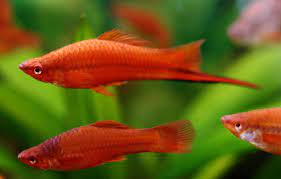
The swordtail (Xiphophorus hellerii) is a small, colorful fish that is native to Central America. It is a popular choice for community tanks because of its peaceful and social behavior. Swordtails grow to be about 8 cm (3 inches) in length and are known for their distinctive, sword-like tail fins. They come in a variety of colors, including orange, red, yellow, and green.
In terms of care, swordtails are relatively easy to keep. They prefer a well-planted tank with a pH between 7.0 and 8.5 and a temperature between 22 and 28°C (72 and 82°F). They are omnivores and will readily accept a variety of foods, including flakes, pellets, and live or frozen treats.
Like guppies and platies, swordtails are livebearers, which means that they give birth to live young rather than laying eggs. This can be both a blessing and a curse, as it means that a single pair of swordtails can quickly turn into a large group if not properly managed. It is important to keep an eye on the population of swordtails in the tank and to remove excess individuals as needed.
Fish #6: Danios

Danios (Danio) are a group of small, active fish that are native to South Asia. They are a popular choice for community tanks because of their peaceful and social behavior. Danios come in a variety of colors and patterns, including silver, gold, and zebra. They grow to be about 5 cm (2 inches) in length and are known for their energetic swimming habits.
In terms of care, danios are relatively easy to keep. They prefer a well-planted tank with a pH between 6.0 and 7.5 and a temperature between 22 and 26°C (72 and 79°F). They are omnivores and will readily accept a variety of foods, including flakes, pellets, and live or frozen treats.
Danios are a hardy species and are generally resistant to disease. However, it is important to keep the tank clean and to perform regular water changes to ensure the health and well-being of these fish. Danios are also sensitive to changes in water quality and temperature, so it is important to monitor these parameters carefully.
Fish #7: Rasboras

Rasboras (Rasbora) are a group of small, colorful fish that are native to South Asia. They are a popular choice for community tanks because of their peaceful and social behavior. Rasboras come in a variety of colors and patterns, including red, orange, and black. They grow to be about 5 cm (2 inches) in length and are known for their attractive, shimmering scales.
In terms of care, rasboras are relatively easy to keep. They prefer a well-planted tank with a pH between 6.0 and 7.5 and a temperature between 22 and 26°C (72 and 79°F). They are omnivores and will readily accept a variety of foods, including flakes, pellets, and live or frozen treats.
Rasboras are a hardy species and are generally resistant to disease. However, it is important to keep the tank clean and to perform regular water changes to ensure the health and well-being of these fish. Rasboras are also sensitive to changes in water quality and temperature, so it is important to monitor these parameters carefully.
Fish #8: Corydoras
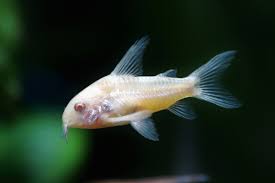
Corydoras (Corydoras) are a group of small, armored fish that are native to South America. They are a popular choice for community tanks because of their peaceful and social behavior. Corydoras come in a variety of colors and patterns, including green, brown, and black. They grow to be about 5 cm (2 inches) in length and are known for their distinctive, armored plates on their bodies.
In terms of care, corydoras are relatively easy to keep. They prefer a well-planted tank with a pH between 6.5 and 7.5 and a temperature between 22 and 26°C (72 and 79°F). They are omnivores and will readily accept a variety of foods, including flakes, pellets, and live or frozen treats.
Corydoras are a hardy species and are generally resistant to disease. However, it is important to keep the tank clean and to perform regular water changes to ensure the health and well-being of these fish. Corydoras are also sensitive to changes in water quality and temperature, so it is important to monitor these parameters carefully.
One unique aspect of corydoras is that they are a bottom-dwelling species, which means that they spend most of their time near the bottom of the tank. It is important to provide them with plenty of hiding places and a substrate that is soft enough for them to dig in. Corydoras are also known for their social behavior and will often school together in large groups.
Fish #9: Gourami
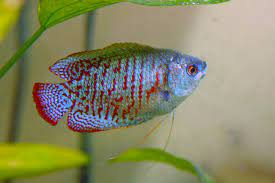
Gouramis (Osphronemidae) are a group of small, colorful fish that are native to South and Southeast Asia. They are a popular choice for community tanks because of their peaceful and social behavior. Gouramis come in a variety of colors and patterns, including blue, red, and green. They grow to be about 10 cm (4 inches) in length and are known for their long, flowing fins.
In terms of care, gouramis are relatively easy to keep. They prefer a well-planted tank with a pH between 6.0 and 7.5 and a temperature between 22 and 26°C (72 and 79°F). They are omnivores and will readily accept a variety of foods, including flakes, pellets, and live or frozen treats.
Gouramis are a hardy species and are generally resistant to disease. However, it is important to keep the tank clean and to perform regular water changes to ensure the health and well-being of these fish. Gouramis are also sensitive to changes in water quality and temperature, so it is important to monitor these parameters carefully.
One unique aspect of gouramis is that they have a labyrinth organ, which allows them to breathe air directly from the surface. This means that they can survive in poorly-oxygenated waters and are able to tolerate a wide range of water conditions. However, it is still important to provide them with a well-filtered and oxygenated tank to ensure their health and well-being.
Fish #10: Angelfish

Angelfish (Pterophyllum) are a group of small, graceful fish that are native to the Amazon Basin in South America. They are a popular choice for community tanks because of their peaceful and social behavior. Angelfish come in a variety of colors and patterns, including silver, gold, and black. They grow to be about 15 cm (6 inches) in length and are known for their tall, triangular bodies and flowing fins.
In terms of care, angelfish are relatively easy to keep. They prefer a well-planted tank with a pH between 6.0 and 7.5 and a temperature between 22 and 26°C (72 and 79°F). They are omnivores and will readily accept a variety of foods, including flakes, pellets, and live or frozen treats.
Angelfish are a hardy species and are generally resistant to disease. However, it is important to keep the tank clean and to perform regular water changes to ensure the health and well-being of these fish. Angelfish are also sensitive to changes in water quality and temperature, so it is important to monitor these parameters carefully.
One unique aspect of angelfish is that they have a high oxygen demand, so it is important to provide them with a well-oxygenated tank. They also have a tendency to be territorial, so it is important to provide them with plenty of hiding places and to avoid overcrowding the tank. Angelfish are also known for their social behavior and will often school together in large groups.
It is also important to note that angelfish can be sensitive to changes in their environment and can be prone to stress. It is important to acclimate them slowly to their new tank and to avoid sudden changes in water parameters. With proper care, angelfish can make a beautiful and peaceful addition to any community tank.
Conclusion
In conclusion, the 10 best community fish for a peaceful tank are the neon tetra, guppy, platy, molly, swordtail, danios, rasboras, corydoras, gourami, and angelfish. These fish are known for their peaceful and social behavior and can coexist peacefully with other fish in the same tank.
Having a tank filled with community fish can create a peaceful and harmonious environment, which is beneficial for the overall health and well-being of the fish. In addition to being peaceful, community fish are also generally easy to care for and can thrive in a variety of tank setups. They are a great choice for those who want to create a beautiful and low-maintenance aquatic environment.
We encourage readers to consider adding some of these fish to their own tanks. However, it is important to remember the importance of researching and properly caring for any fish before adding them to a tank. This includes understanding their specific care requirements, such as their preferred water parameters and diet, and ensuring that the tank is properly equipped to meet these needs. By following proper care guidelines, you can help ensure the health and well-being of your community fish and create a peaceful and harmonious environment for them to thrive in.
You may also be interested in the article Top 12 Fish for Beginners; everything you need to know, please click here to check it

